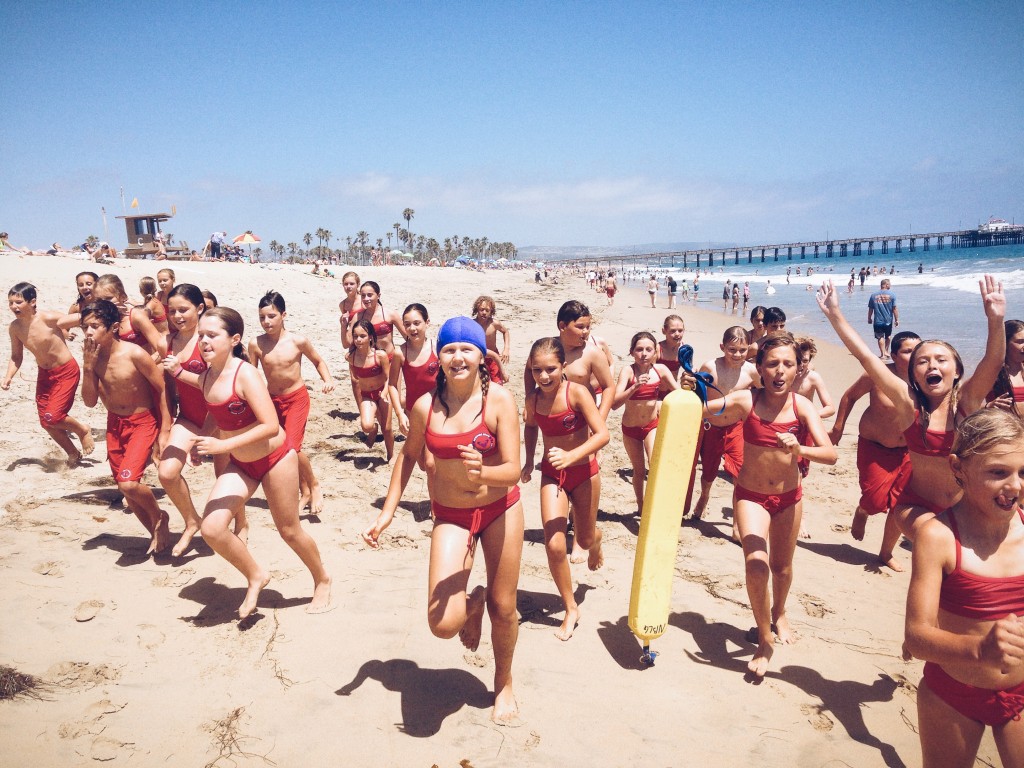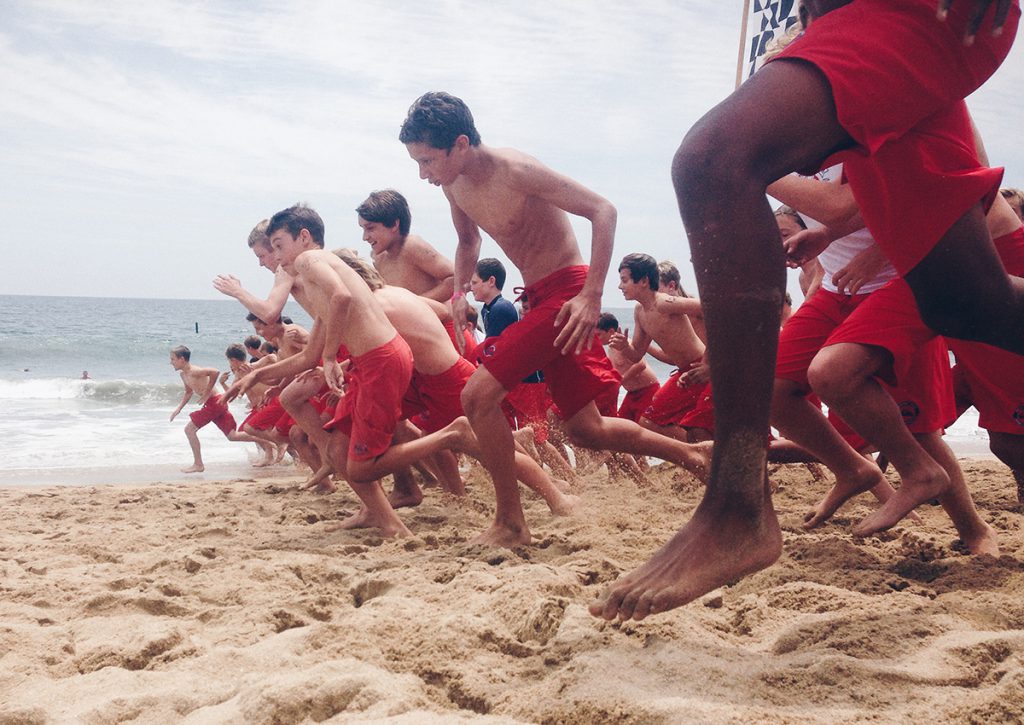
Whatever may be the final number of visitors to Newport’s famous beaches this summer, add 1,433.
That’s the number of boys and girls who qualified for Newport’s immensely popular Junior Lifeguard program, now celebrating its 40th season.
The Junior Lifeguard program is run by the Lifeguard Division of the Fire Department and falls under the direction of the Lifeguard Training Captain Gary Conwell, who has been with the life guards for 28 years (19 of those years full time).
But all the kids need to know is to pay attention to the taller people in red bathing suits with commanding voices and whistles around their necks.
Participants’ ages range from nine to 15 years of age. Hopeful Junior Lifeguards tested last March; each age group was required to swim 100 yards in times ranging from one minute 35 seconds to one minute 50 seconds, depending on age groupings. Fortunately, there were no currents or waves to affect times, just the encouraging yells of parents and friends in the bleachers at either CdM of Newport Harbor High School pools.
Without delving into official records, Conwell guesstimates that more than 30,000 kids have graduated from the program, and quite a few over the years having become either full-time or seasonal lifeguards.
“I got my start as a junior lifeguard,” Conwell said, “and at least three-quarters of our employees or more were JG’s at a beach in Orange County, at some time.”
Currently, there are 15 full-time lifeguards in Newport, with that number swelling to 225 seasonal lifeguards during the summer.
Starting June 18, at either 9 a.m. or 1 p.m., the three-hour, four-day-a-week physical challenges and learning experiences began.

“Our sessions focus on educating participants to recognize potentially hazardous conditions associated with an ever-changing aquatic environment,” Conwell informed. “Activities will center on ocean skill building, lifeguarding skills and physical fitness.” There’s also bookwork — actually a junior lifeguard manual — on which each participant will be tested to ascertain their “beach knowledge” at the program’s end.
Conwell says that the “program is challenging, but it’s also lots of fun; it inspires the kids in so many physical and mental ways. It establishes a strong foundation for independence and beach awareness. After the seven weeks are over, you can see their growth and comfort in swimming, running and being respectful.”
Over the span of the program, the JGs will have competed in multiple events, one being a seven-and-one-half mile run on the beach. Some of the tests may pose a challenge to a few of the kids, “but we’re there to help them through any obstacles that may impede their participation,” Conwell said.
Kids being kids, there are always a few disciplinary problems, which most often are eliminated after requiring push-ups, picking up trash or taking away some fun activities.
Throughout, Lifeguard instructors emphasize the three Rs. Nope, not those three, these three: Respect, Responsibility and Representation.
For four decades, the Junior Lifeguard program has operated out of a trailer located on Ocean Blvd., adjacent to the Balboa Pier. But on June 6, the public was invited to join in celebration of the opening of the dedicated, $7.8 million, 5,400-square-foot Junior Lifeguard Building — a dream-come-true facility costing $7.8 million that was paid for using federal funds provided by the American Rescue Plan Act ($5.2 million) and private donations ($2.052 million) via the Newport Beach Junior Lifeguard Foundation.
As will be taught and emphasized at the new HQs, safety is always the focus, Conwell said. That means not only for the program’s participants, but ultimately for many thousands of recreational beachgoers, as well as for the lifeguards themselves.
For Newport’s lifeguards — junior, as well as full time — being prepared includes peak physical fitness, unwavering attention to the sea and to the throngs enjoying the surf—and plenty of sunscreen.




